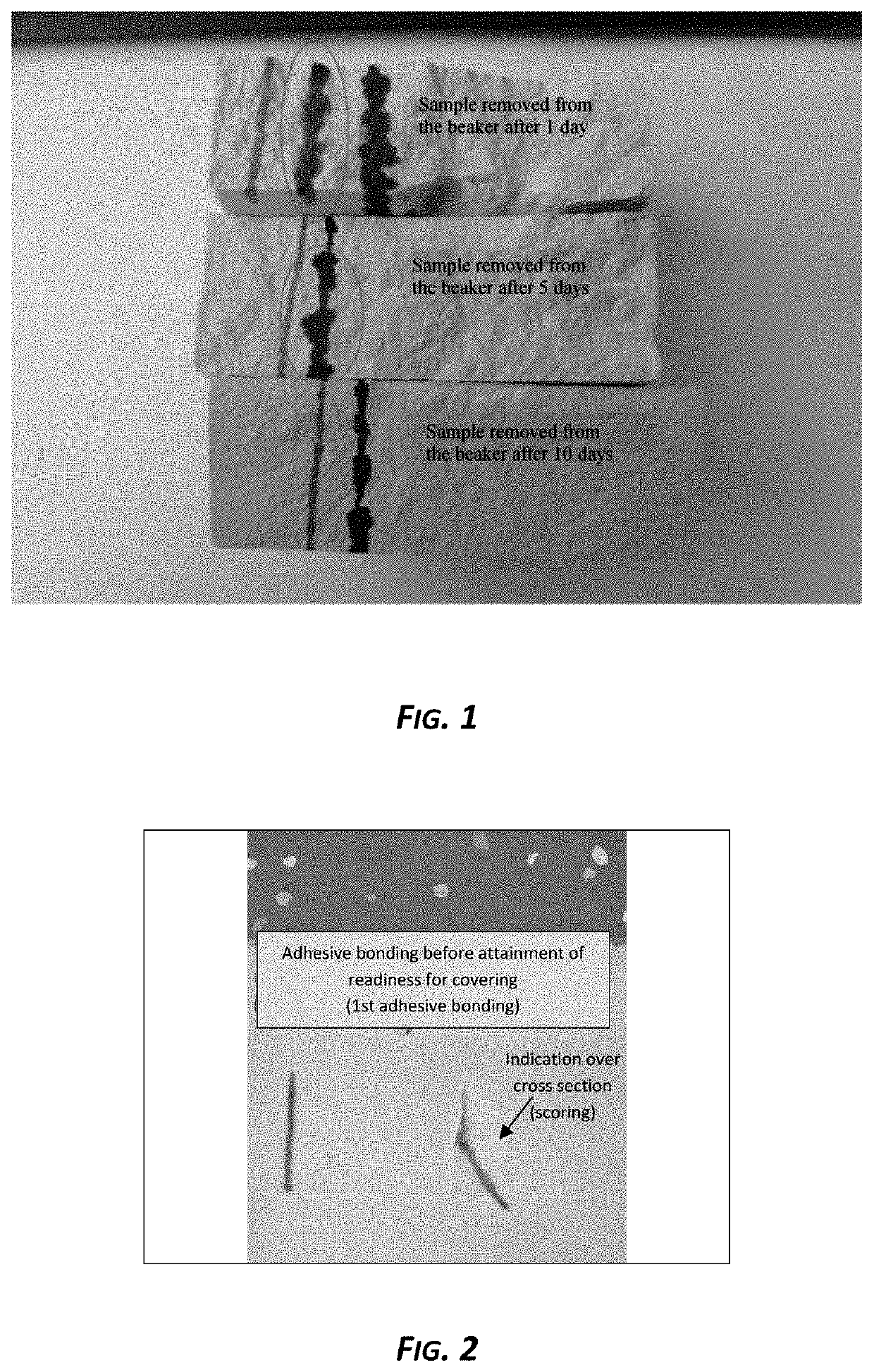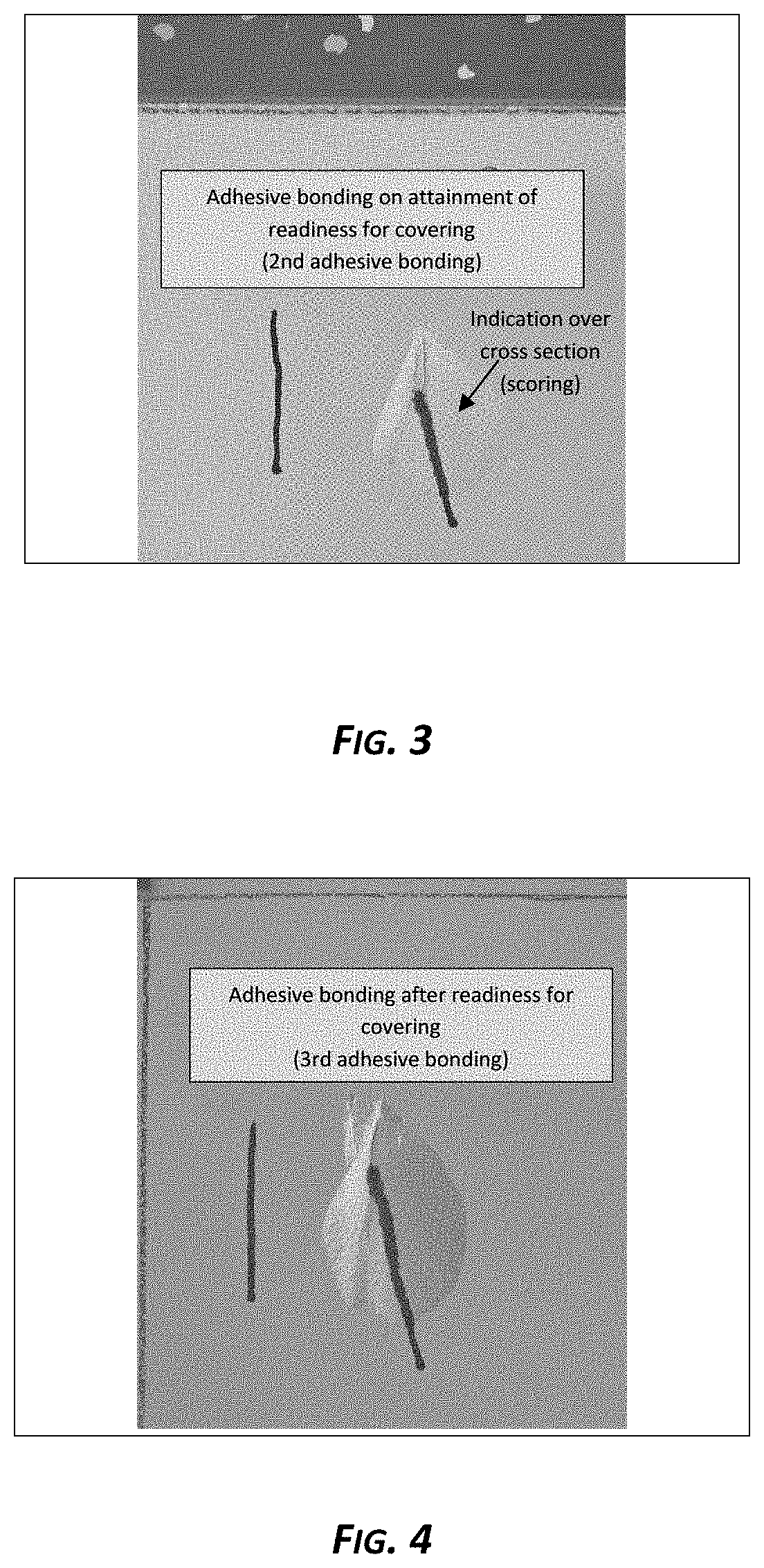Dye mixture for determining the readiness for covering of levelling compounds
a technology of dye mixture and readiness, which is applied in the direction of coating, component separation, and moisture content investigation, can solve the problems of reducing the technical functionality, affecting the colouring effect, and affecting the appearance of the dye, so as to increase the colouring effect, the chromatographic separation of the two dyes is easy to be visually verified, and the solubility of water is large.
- Summary
- Abstract
- Description
- Claims
- Application Information
AI Technical Summary
Benefits of technology
Problems solved by technology
Method used
Image
Examples
examples
[0054]An illustrative dye mixture of the two colorants Basacid Rot 495 liquid and Sepisol Fast Black CN was made up and introduced into an empty ballpoint pen. The composition of the dye mixture was as follows: 81.9% by weight of Basacid Rot 495 liquid / 16.4% by weight of EtOH 96% / 1.7% by weight of Sepisol fast Black CN.
[0055]The functionality of chromatographic separation in the presence of residual moisture in a levelling compound was tested on a plurality of samples of the gypsum levelling compound UZIN NC 110 NEU having a thickness of about 3 cm. The samples poured into plastic beakers were taken from the beakers after 1 day, after 5 days and after 10 days and halved in the middle. The pen was subsequently applied over the entire cross section of the compound.
[0056]FIG. 1 shows the result of the 3 samples, with the uppermost sample having been removed from the beaker after one day, the middle sample after 5 days and the bottom sample after 10 days. The blue line on the left was a...
example 2
[0061]In the following examples, the readiness for covering is determined on a gypsum-based, self-levelling compound by means of a dye mixture according to the invention.
[0062]To assess the readiness for covering, the following procedure was selected: Levelling compounds / screeds were applied in a layer thickness of about 3 mm. A concrete substrate which had been pretreated with a one-component rapid reactive primer which slowed passage of water vapour (UZIN PE 414 Turbo) and a dispersion-based bonding agent (Uzin PE 280) was selected as substrate.
[0063]In the following tables, the readiness for covering determined using a pen containing a dye mixture for chromatographic separation is compared with the readiness for covering determined by the above-described method. The dye mixture present in the pen comprises a sparingly water-soluble dye and a readily water-soluble dye. Testing was carried out before the expected readiness for covering (1st adhesive bonding), on attainment of readi...
PUM
| Property | Measurement | Unit |
|---|---|---|
| solubility | aaaaa | aaaaa |
| solubility | aaaaa | aaaaa |
| solubility | aaaaa | aaaaa |
Abstract
Description
Claims
Application Information
 Login to View More
Login to View More - R&D
- Intellectual Property
- Life Sciences
- Materials
- Tech Scout
- Unparalleled Data Quality
- Higher Quality Content
- 60% Fewer Hallucinations
Browse by: Latest US Patents, China's latest patents, Technical Efficacy Thesaurus, Application Domain, Technology Topic, Popular Technical Reports.
© 2025 PatSnap. All rights reserved.Legal|Privacy policy|Modern Slavery Act Transparency Statement|Sitemap|About US| Contact US: help@patsnap.com


